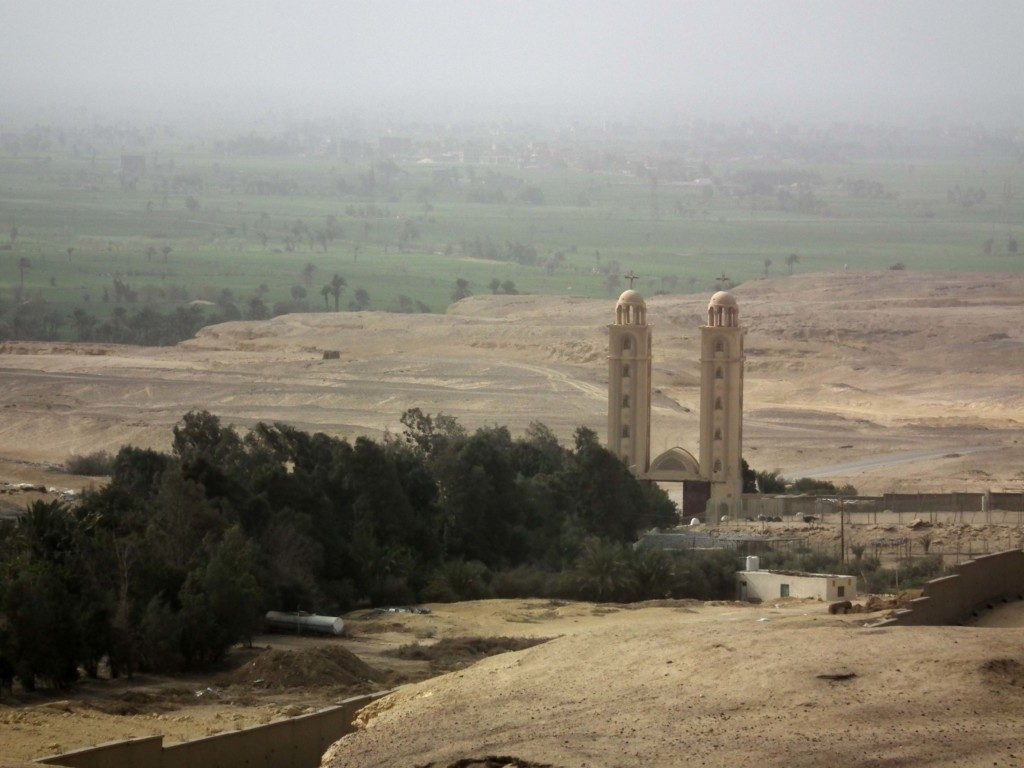
Photo from Explore Fayum (2017)
Two weeks ago we discussed a book of amulets which showed how “magical” practices could be entirely Christian, and we noted that the book’s format suggested it might even have been produced by monks. The idea that monks played a prominent role in the practice of magic in late antique Egypt has been promoted recently by David Frankfurter, whose book Christianizing Egypt argues that most of the surviving magical texts that we have were copied by monks. We do indeed have several texts which seem to come from monasteries or monastic cells, although many more have no clear provenance, and, as we saw in the case of the ancient town of Kellis, there are some Coptic magical texts which we know were not produced or used by monks. This week, though, we will look at one of the best attested instances of a monk practicing magic, the fascinating case of Phoibammon of Naqlun.
Naqlun is in the southern part of the Fayum oasis, a richly watered outgrowth of the Nile valley, south-west of Cairo. Since 1986, the Polish Centre of Mediterranean Archeology have conducted regular excavations around the Monastery of the Archangel Gabriel, one of the most ancient monastic sites of the region. The modern church, considerably rebuilt in the 19th and 20th centuries, survives to the present day, and can still be visited. The older, original church, perhaps dating back to the 5th century, is slightly further north, and has a fascinating origin story – according to a legend preserved in Arabic, its builder, and first abbot, was Aur, the son of a magician and a princess from a far-eastern kingdom, who was chosen from birth by the Archangel Gabriel.
The Polish excavations have shown that the site was originally a lauritic monastery, one in which individual monks lived with one or two disciples in scattered hermitages, but came together regularly to worship in the central church. Eighty-nine such hermitages have been uncovered, cut into the mountain around the church, and inhabited between the fifth and thirteenth centuries.
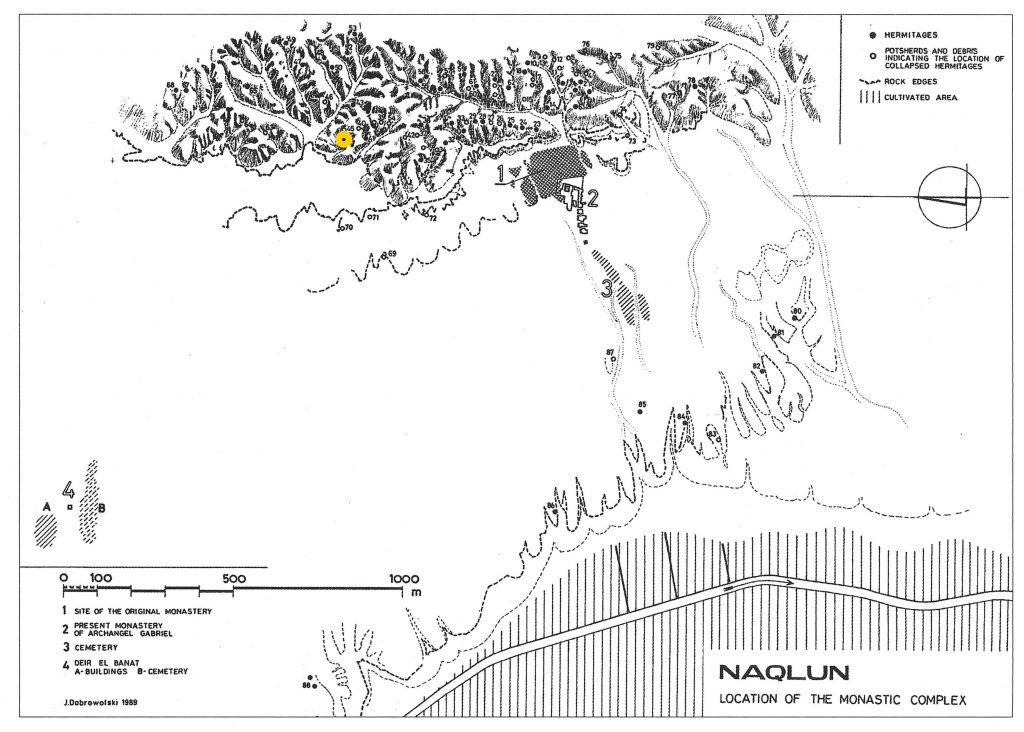
Drawing by J. Dobrowolski, (1989)
Hermitage 44 is one of the oldest of these, located in a small valley open to the north. Like many of the hermitages, it imitates the form of a well-to-do urban dwelling, with rooms built around a central open courtyard (H) which offers both fresh air and shade from the sun, a layout still common in Egypt today. The fragmentary remains found in the hermitage give us clues about the identities and lives of its inhabitant – fragmentary pottery and glass, some imported from North Africa and Cyprus, tell us that the monk who lived here was probably relatively wealthy, despite the ideal that monks would renounce all wealth. A few coins from the fifth century CE tell us that he probably lived at this time, and probably for no more than one or two monastic generations (30-60 years). A well-used kalamos, or reed pen, tells us that the inhabitant was literate, and we have found his name written on a bowl – “Phibamo”, an unusual writing of Phoibammon.
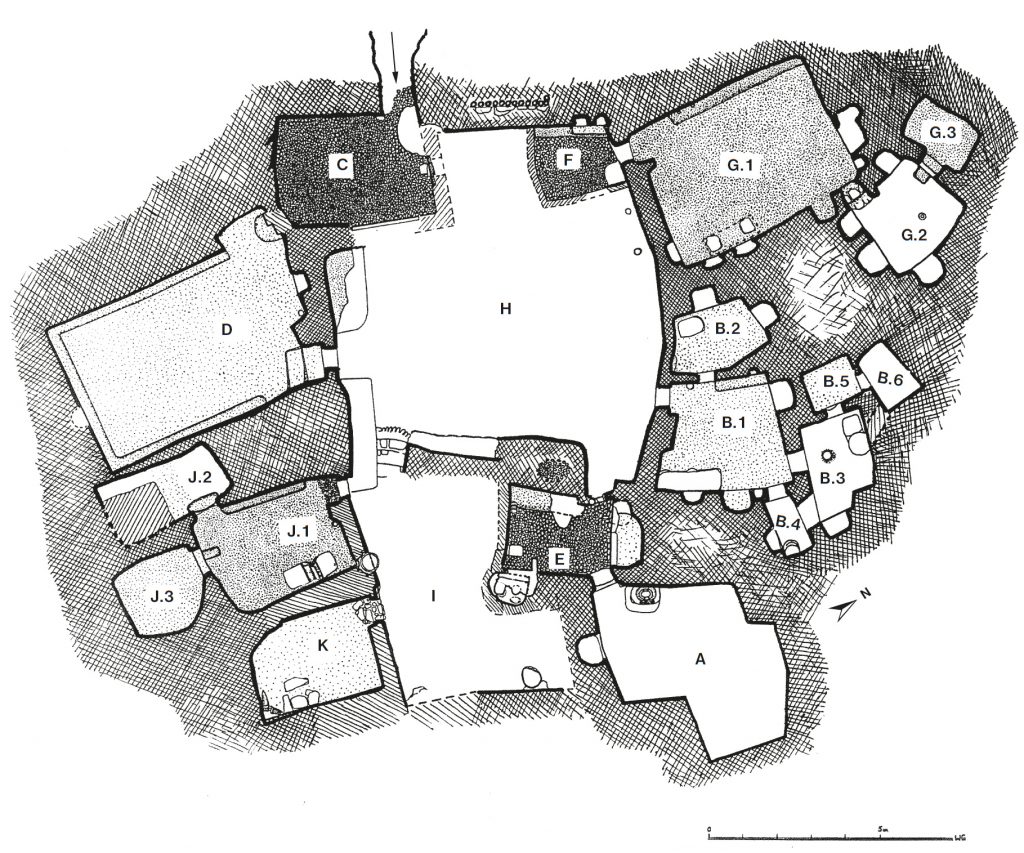
Drawing by W. Godlewski
Phoibammon probably lived in the complex of rooms labelled “G” by the excavators, which included a sleeping chamber and an oratory, or prayer room, which had an east-facing niche cut into the wall towards which he would have regularly prayed. A similar, but smaller, complex of rooms (B) likely served as the sleeping quarters of his disciple, whose name is not preserved. These are close to the kitchen (E) and storeroom (A): Phoibammon’s disciple would have been expected to do the cooking for his master, and any guests. A small secondary room (K), roofed by mats, seems to have been for some time a stable for a donkey, who perhaps carried Phoibammon when he travelled, or did some other work for the monks.
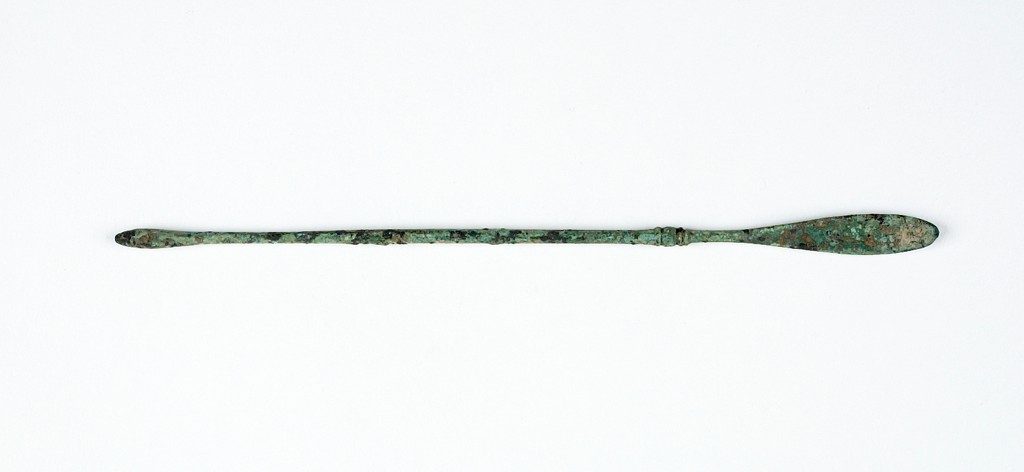
© President and Fellows of Harvard College
What interests us here, though, is Phoibammon’s magical practice. The excavators have suggested that one room near the hermitage’s entrance (D) with benches along its walls served as a waiting room for visitors, who might have come seeking solutions for their personal problems. A fragmentary codex from the hermitage contains seven medical prescriptions in Greek and Coptic, for conditions including migraine and fever, and the site has also yielded a small bronze spoon of a type known as a cyathiscomele, used for mixing and applying drugs. Phoibammon’s literacy, and his authority as a holy man, may have given him a reputation as a healer.
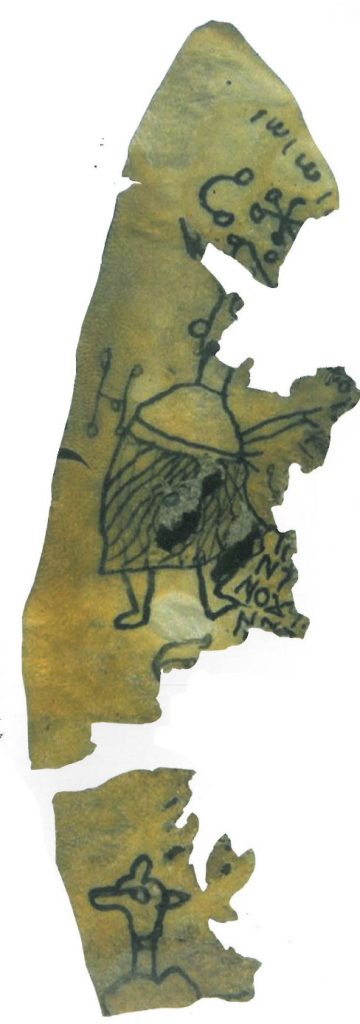
© W. Godlewski, Polish Centre for Mediterranean Archaeology
But alongside these healing practices, he had other interests. The first recipe in the book containing medical prescriptions is in fact a spell intended to return an unfaithful wife to her husband. An interest in using magic to manipulate relationships is also seen in a fragmentary parchment manuscript, on which we can see the remains of a few magical words and images of animal-headed creatures. The text was shaped like a knife, and a well-known parallel held in the Louvre suggests to us that this was a curse text intended to separate a couple, slicing through their relationship.

The third magical text is the only one which is presently fully published. It is another small strip of parchment, containing a curse against a man called Victor son of Zoe – Zoe (“Life”) was another name for Eve, and this may tell us that the person who commissioned the curse didn’t know the name of Victor’s real mother, and so had to use the name of the mother of the whole human race. Since the text is short, we can provide a full translation of it here:
I invoke you, Atrakh, the great angel who is on the right of the sun!
Naqlun N 45/95
I invoke you Moutrakh, the great angel who is on the left of the sun!
I invoke you Semeōn, the great angel, he of the two-hundred-and-ten treasures of his right hand!
By the power of Sixsix Ouriham Ourihmrō Ourikh Marikh, give him shame and a fall and contempt and a…
Victor, son of Zoe.
As Jacques van der Vliet has shown, this brief text is very rich, demonstrating the continuing importance of the sun in Egyptian Christianity, and its position in a complex angelic cosmology unknown in official Christian discourse. Some of the angels invoked here, notably Atrakh, show up in other texts for different purposes, and although we know nothing else about Victor, or what he did to deserve a curse, it’s interesting to note that the curse is not for death or disease, but rather for social exclusion – shame, a fall from grace, and contempt.
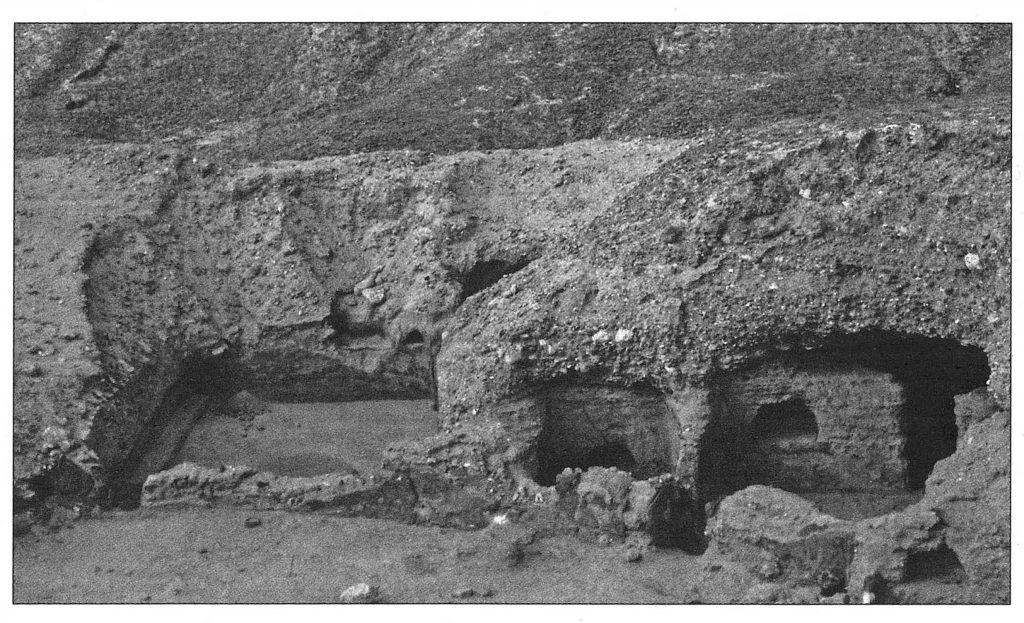
Photograph by W. Godlewski
The texts from Hermitage 44 remain to be fully published and studied, and even once this is done we will still have only a brief glimpse of Phoibammon and his life in the Egyptian desert. Van der Vliet has suggested that his disciple abandoned the site, and his magical texts, which may explain the hermitage’s brief occupation. He nonetheless provides us with a picture of what a monk practicing “magic” may have looked like – an elder living outside the town, but still only a short walk into the desert, mixing medicines and reciting prayers for the sick, copying curses or performing love and separation spells when his visitors needed them. Phoibammon may not have been a typical monk, or a typical magician, but among the mass of unprovenanced and anonymous texts we have, his small archive is particularly important.
References and Further Reading
The Polish Centre of Mediterranean Archeology page on Naqloun URL
Essential page giving an overview and regular updates of work in Naqlun.
Frankfurter, David. Christianizing Egypt: Syncretism and Local Worlds in Late Antiquity. Princeton: Princeton University Press, 2017.
Godlewski, Włodzimierz. “Excavating the Ancient Monastery at Naqlun”. In Gawdat Gabra (editor), Christianity and Monasticism in the Fayoum Oasis. Cairo/New York: American University in Cairo Press (2011) 155-171.
A good overview of the site of Naqlun.
Godlewski, Włodzimierz. “Naqlun: Excavations 1995”. Polish Archaeology in the Mediterranean 7 (1995) 82-85. URL
One of the three original reports on the excavation of Hermitage 44.
Godlewski, Włodzimierz. “Naqlun: Excavations 1996”. Polish Archaeology in the Mediterranean 8 (1996) 88-92. URL
Godlewski, Włodzimierz. “Naqlun: Excavations 1997”. Polish Archaeology in the Mediterranean 9 (1997) 77-83. URL
Godlewski, Włodzimierz. “The Hermitage of Apa Phoibamon.” In Krzysztof M. Ciałowicz and Janusz A. Ostrowski (editors), Civilisations du Bassin Méditerranéen: Hommages à Joachim Sliwa. Krakow: Université Jagellone Institut d’Archéologie (2000) 91-98.
The fullest discussion of Hermitage 44 and Phoibammon.
Mossakowska-Gaubert, Maria. “Question d’éclairage: ermitage no. 44 à Naqlun (Fayoum)”. Annales Islamologiques 34 (2000) 335-357.
Excellent French language overview of Hermitage 44, focusing on questions of lighting, but also describing the site’s division of space and use.
van der Vliet, Jacques. “Les Anges du Soleil”. Études Coptes VII (2000), 319-337.
Contains the edition of the curse, and the fullest discussion of Phoibammon’s magical practice.

2 Comments
Michael Saad
It is not surprising then, that the novelist Paul Coelho, in his famous novel The Alchemist, chose Coptic magic, practiced by a Coptic monk in a Coptic monastery in Fayoum, as a key milestone in fulfilling the dreams of the shephard boy from Spain.
Korshi
A fascinating observation, thanks for pointing it out! Perhaps a connection to explore in the future.